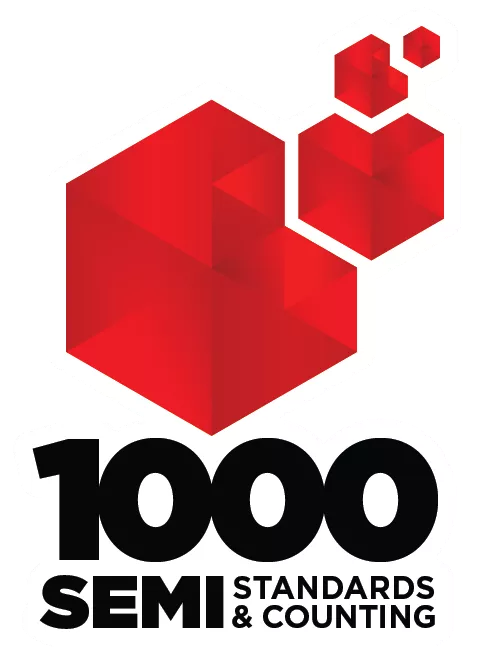
This article is the second in a series highlighting the vital importance of SEMI Standards to commemorate the publication of the 1000th SEMI Standard in July 2019. Find the entire series here.
Chip traceability. It’s one of the next big things for the technology industry. The benefits are enormous, and the upsides — which include enhancing yields by identifying the sources of reliability issues, fighting counterfeiting, and growing the overall technology market by enabling new applications — are plentiful.
But the implementation challenges of chip traceability are also big and will require considerable effort to overcome. Perhaps the biggest hurdle of all is that we need to transcend industry fears by demonstrating that we can secure IP when it is shared across the hardware supply chain.
What will drive the technology industry to make the necessary investments in traceability?
“Automotive will drive traceability,” asserted Doug Suerich, product evangelist at PEER Group and an active participant in the SEMI Standards Traceability Committee. “If I had to guess, the autonomous car in particular will drive a traceability-standard effort.”
 Where Reliability is Critical
Where Reliability is Critical
When your laptop crashes, it’s annoying. But when a car crashes because of a system failure, the damages can be severe and catastrophic It’s also one that is poised to get exponentially larger as we see ever greater amounts of silicon content in vehicles.
Fortunately, everyone can agree on the nature of the solution. The industry needs to create a standard for traceability throughout the supply chain. When lives are at risk, we must find and fix the manufacturing source of any defects that affect reliability. That’s understood. Now it’s the not-so-small matter of figuring out the details.
Of course, it’s not just about cars. Manufacturers and users of medical devices and military platforms also put a premium on extended, high levels of reliability. In the technology industry, however, the automotive market represents such enormous growth potential that we view it as integral to future industry success.
At a market size of more than $1 trillion, automotive is steadily becoming a high-tech market as cars transform into advanced technology platforms that offer partially or fully autonomous features. Vehicles are fast becoming semiconductors on wheels. With leaders from Google to General Motors investing heavily in chip advances, the automotive industry will demand a supply chain that requires chip and device traceability from all its participants.
The SEMI Technology Communities and Standards Committee have made some inroads toward solving the traceability challenge with their development and publication of a SEMI Standard enabling traceable device-level identification (ID) throughout the IC manufacturing, test, and assembly processes to the point of use in the final system. The standard is a meaningful first step but overcoming the challenges of counterfeiting and information sharing remain and will require greater industry collaboration.
 “It comes down to a safety issue,” said Suerich. “We need the ability to collect data across the supply chain, so we can trace down the source of a reliability issue, analyze the data and take corrective actions around applications for which safety is critical. Automotive, medical and aerospace devices need to keep working over five, 10 or even more years. For the semiconductor industry, that means redefining yield.”
“It comes down to a safety issue,” said Suerich. “We need the ability to collect data across the supply chain, so we can trace down the source of a reliability issue, analyze the data and take corrective actions around applications for which safety is critical. Automotive, medical and aerospace devices need to keep working over five, 10 or even more years. For the semiconductor industry, that means redefining yield.”
Traceability Roadmap
“It’s going to be a major challenge to share data throughout the supply chain, not just technologically, but culturally as well,” added Suerich. “It will take a concerted effort, and we’re just in the early stages of figuring out some of the IP protection issues.”
While traceability is new ground for the culture of the semiconductor industry, the automotive industry has long embraced tracing the sources of defects. In some cases, automotive suppliers have issued wide-ranging product recalls due to safety concerns. The Takata airbag defect, for example, resulted in tens of millions of recalled airbags. As the automotive and semiconductor supply chains increasingly overlap, SEMI committees and task forces are in an ideal position to model traceability best practices in after those implemented by the automotive industry.

“We’re going to need an organization like SEMI to coordinate and organize this,” observed Suerich. “While we’re still in the early phases of figuring this out, the market potential around automotive has attracted a critical mass of powerful companies who want a solution. We need to standardize a way to tag which information can flow up and down the chain, and which is protected. I think we’re looking at more than five years of hard work around new standards.”
Semiconductor companies are understandably cautious about sharing data related to their proprietary processes because the value of the intellectual property and need to protect data is simply higher than in many other industries.
“Automotive offers the perfect confluence of factors to drive traceability in semiconductors,” Suerich concluded. “There is increasing silicon content as well as lives and big money at stake, and motivated players at leading companies and within government institutions want to see progress.”
Use your voice to affect standardization in and around the microelectronics industry. Learn about SEMI International Standards – and become part of the solution.
Learn more about SEMI's traceability activities.
 Heidi Hoffman is senior director of technology communities marketing at SEMI. Hoffman and her team shine a spotlight on the work of the more than 20 technology communities under the SEMI electronics manufacturing supply chain collaboration platform. Actively engaging community members in marketing programs that showcase their unique value, Hoffman’s team helps companies grow and prosper through the power of connection, collaboration and innovation.
Heidi Hoffman is senior director of technology communities marketing at SEMI. Hoffman and her team shine a spotlight on the work of the more than 20 technology communities under the SEMI electronics manufacturing supply chain collaboration platform. Actively engaging community members in marketing programs that showcase their unique value, Hoffman’s team helps companies grow and prosper through the power of connection, collaboration and innovation.